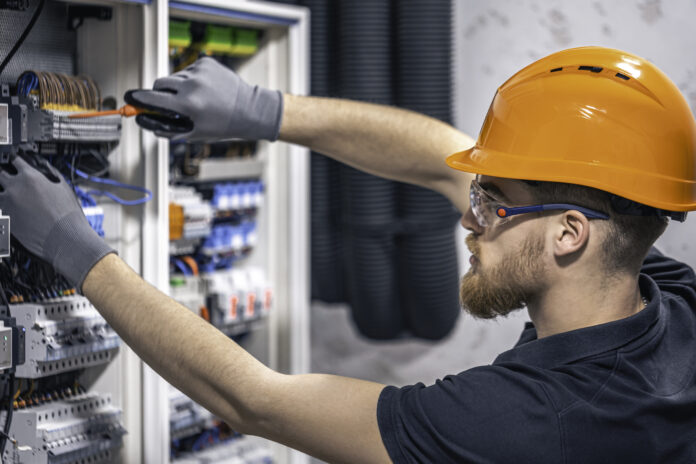Introduction: Why Electrical Equipment Maintenance Matters
Electricity powers our homes, businesses, and industries. Behind every switch, circuit, or outlet lies a system of components that must be kept in optimal condition to function safely and efficiently. Electrical equipment maintenance is the foundation of a reliable power system, minimizing hazards and ensuring continuous operation. As technology and infrastructure evolve, the need for regular, preventive maintenance becomes increasingly vital.
What Does Electrical Equipment Maintenance Involve?
Electrical maintenance is a comprehensive process involving inspection, testing, adjustment, and replacement of components in an electrical system. This maintenance applies to systems such as circuit breakers, switchgear, transformers, panels, fuses, wiring, and electrical machines. It includes both scheduled services and emergency repairs.
The main objective is to detect issues early, prevent failure, and improve the performance and lifespan of the equipment.
Categories of Electrical Equipment Maintenance
1. Preventive Maintenance
This is a proactive approach involving routine checks and services scheduled at specific intervals. Tasks may include cleaning, checking insulation resistance, tightening connections, and verifying protective devices.
2. Predictive Maintenance
This uses real-time data and condition-monitoring tools to anticipate failures. Techniques such as thermographic scanning and vibration analysis help identify components nearing failure, allowing for targeted interventions.
3. Corrective Maintenance
When a fault or breakdown occurs, corrective maintenance focuses on restoring functionality. This may involve part replacement, rewiring, or reconfiguration of the electrical system.
Benefits of Effective Electrical Equipment Maintenance
1. Enhanced Operational Safety
Electrical faults are among the leading causes of fires and workplace accidents. Regular maintenance reduces the risk of electric shocks, short circuits, and system overloads.
2. Improved Equipment Reliability
Consistent servicing ensures equipment works as intended, avoiding unexpected downtimes and costly repairs.
3. Regulatory Compliance
Compliance with electrical codes and safety regulations often mandates routine inspection and maintenance. Failure to comply can result in penalties or business interruptions.
4. Cost Efficiency Over Time
Although maintenance involves costs, it reduces the likelihood of expensive emergency repairs and premature equipment replacement.
5. Energy Efficiency
Well-maintained systems consume less energy. Clean and properly calibrated components reduce unnecessary power loss and contribute to lower utility bills.
Components That Require Regular Maintenance
1. Electrical Panels and Distribution Boards
These control the flow of electricity and require frequent checks for loose connections, heat buildup, and corrosion.
2. Circuit Breakers and Fuses
Responsible for protecting circuits from overloads, they must be tested for response times and signs of wear.
3. Transformers and Switchgear
Often used in commercial and industrial applications, these need oil checks, thermal imaging, and insulation testing.
4. Wiring and Cabling
Damaged or degraded wires pose safety risks and reduce system efficiency. Periodic inspections help catch problems before they become hazardous.
5. Motors and Electrical Machines
Used widely in manufacturing and HVAC systems, motors should be checked for vibration, alignment, and overheating.
Common Electrical Maintenance Tasks
1. Visual Inspections
A simple yet effective method to detect burnt components, discolored wiring, or damaged insulation.
2. Thermal Imaging
Helps identify hot spots and overloaded circuits that are invisible to the naked eye.
3. Insulation Resistance Testing
Measures the integrity of wire insulation, preventing leakage currents and electrical shocks.
4. Load Testing
Verifies that systems can handle the expected load without malfunctioning.
5. Cleaning and Lubrication
Dust, dirt, and moisture can degrade performance. Regular cleaning, especially of cooling fans and contact points, is essential.
Safety Protocols During Maintenance
1. Power Isolation
Always disconnect power before conducting any form of electrical maintenance. This ensures a zero-voltage environment for technicians.
2. Lockout/Tagout Procedures
These safety measures ensure that equipment cannot be re-energized while being serviced.
3. Use of Personal Protective Equipment (PPE)
Technicians must wear gear such as insulated gloves, safety goggles, arc-rated clothing, and dielectric footwear.
4. Signage and Warning Labels
Clear warnings should be placed around areas under maintenance to prevent unauthorized access.
Challenges in Electrical Equipment Maintenance
1. Inaccessibility of Equipment
Some electrical systems are located in confined or hard-to-reach areas, complicating maintenance efforts.
2. Budget Limitations
Budget constraints often lead to deferred maintenance, increasing the risk of unexpected breakdowns.
3. Human Error
Improper testing, incorrect installation, or overlooked faults can compromise the entire system. Training and documentation are essential.
4. Lack of Documentation
Without proper maintenance logs, it becomes difficult to track issues or schedule timely services.
Best Practices for Successful Maintenance Programs
1. Implement a Maintenance Schedule
Use structured plans based on manufacturer recommendations and usage conditions. Schedule checks weekly, monthly, or annually as needed.
2. Maintain Detailed Records
Keep logs of inspections, repairs, and component replacements. This supports decision-making and ensures accountability.
3. Train Maintenance Personnel
Technicians must be up to date on electrical codes, safety standards, and diagnostic tools.
4. Conduct Equipment Audits
Audits help evaluate current maintenance effectiveness and highlight areas needing improvement.
5. Adopt Maintenance Management Software
Digital tools can streamline scheduling, reporting, and inventory management.
Role of Electrical Maintenance in Sustainable Development
Well-maintained electrical systems contribute to sustainability by reducing energy wastage and minimizing the environmental impact of premature equipment disposal. Energy-efficient operations also align with global initiatives for reducing carbon footprints and enhancing resource utilization.
When to Call a Professional
Some minor maintenance tasks can be performed in-house, but for complex systems or commercial setups, it is best to engage certified electrical professionals. They bring specialized tools, technical expertise, and knowledge of regulatory requirements.
Conclusion
Electrical equipment maintenance is not just about fixing problems — it’s about preventing them. It safeguards life, property, and productivity while supporting long-term cost savings and compliance. From residential buildings to industrial plants, maintenance is a cornerstone of efficient, reliable, and safe electrical operations. By adopting a strategic approach, organizations and individuals can optimize performance, minimize risks, and create a sustainable electrical environment for the future.
































